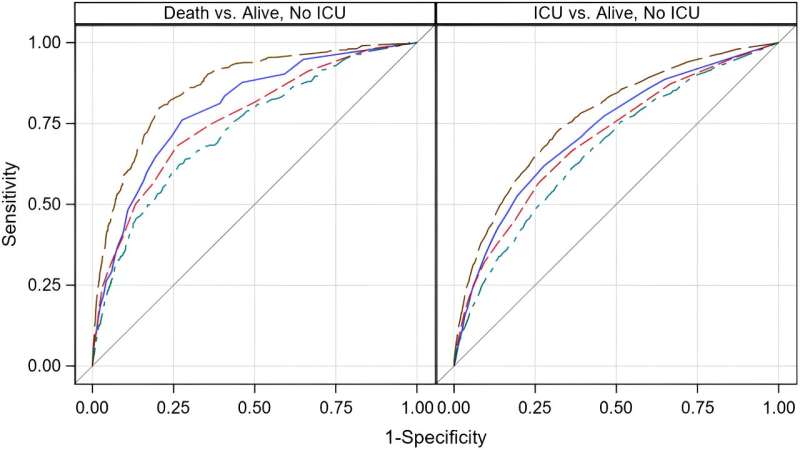This article has been reviewed according to Science X's editorial process and policies. Editors have highlighted the following attributes while ensuring the content's credibility:
fact-checked
trusted source
proofread
Team develops new population risk prediction model for likelihood of ICU admission and survival

A significant obstacle to improving care and outcomes for intensive care unit (ICU) patients is the unexpected nature of becoming seriously ill. Which groups of patients are likely to become severely ill, and will they survive their ICU stay?
In a first step in creating infrastructure for further studies to identify and follow cohorts of patients who may become critically ill, researchers including Sikandar Khan, D.O, M.S., of Regenstrief Institute and Indiana University School of Medicine, have developed and conducted initial testing of the Prediction Risk Score.
Their work is published in Health Science Reports.
Harnessing information available in a health system's electronic health records, this novel population health tool enables health systems and researchers to better identify groups of patients at risk of being admitted to an ICU in the future and their potential outcomes. ICU survivors are at risk for ICU-acquired cognitive and physical function impairments and may require extensive post-ICU care.
Because the growing population of middle-aged individuals is equally at risk for poor health outcomes as older patients, the researchers developed the scoring system to identify at-risk patients as young as age 50.
"Our Risk Prediction Score tool is designed to be used by health systems and researchers so they can engage with adults in a certain population—perhaps those with certain specific health issues or those living in a specific geographic area—who may be at higher risk of ICU admission and higher or lower risk of ICU survival," said Dr. Khan.
"The good news is that if researchers are able to identify populations likely to become future ICU patients using the Prediction Risk Score, they may be able to enroll patients in these populations in studies earlier, and health systems may be able to develop new programs and new models of care for at-risk populations to improve the outcomes of individual patients in and after the ICU.
"Currently, we have imprecise tools to identify which groups of patients will become severely ill. This study presents the first step in creating infrastructure for further research by us and others to identify and follow cohorts of patients who may become critically ill and ultimately to improve their outcomes."
More information: Sikandar H. Khan et al, Development of a population‐level prediction model for intensive care unit (ICU) survivorship and mortality in older adults: A population‐based cohort study, Health Science Reports (2023). DOI: 10.1002/hsr2.1634





















